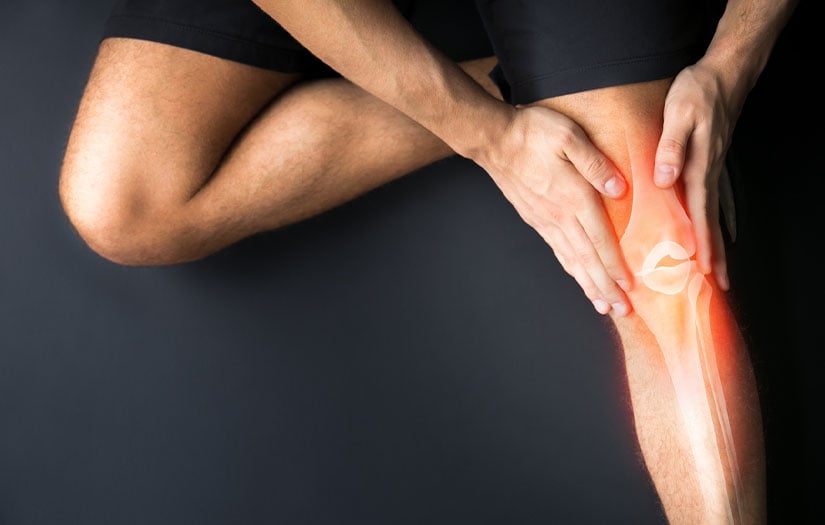Often we take for granted our body's ability to move. Movement occurs quickly and often without thought. But take a deeper look beneath the surface and you will understand why simple movements, like bending at the knee, require complex interactions between bones, muscles and ligaments.
Fascinated by human movement? Then take some time to learn about the screw home rotation at the knee. This obligatory rotation is part of the reason exercise form is such an important part of training!
What is Screw Home Rotation?
The knees have a "Screw Home" rotation that allows for full knee extension and flexion. There is an observable rotation of the knee during flexion and extension. During the last 30 degrees of knee extension, the tibia (open chain) or femur (closed chain) must externally or internally rotate, respectively, about 10 degrees. (1) That might not seem all that significant, but this rotation is important for healthy movement of the knee.
Whether it is tibial-on-femoral rotation, as in an open chain exercise like in the leg extension machine, or femoral-on-tibial rotation, as in a closed chain exercise like the squat, rotation must occur to achieve full extension and then flexion from full extension.
This is due to factors including:
- The shape of the medial femoral condyle. (2) The condyles on the femur are shaped a bit differently than those elsewhere in the body. According to research, the articular surface (the end of the bone where two bones join to allow movement) on the medial femoral condyle has a 30 degree lateral curve. This curvature allows the tibia and femur to follow this curve with tibial-on-femoral rotation as well as femoral-on-tibial rotation. (3)
- The lateral pull of the quadriceps is a factor in the lateral rotation during the later phases of extension. (The quadriceps insert into the tibial tuberosity via the patellar tendon). When contracted, the quadriceps cause an anterior translation of the tibia on the femur.
This creates a passive tension in the anterior cruciate ligament (ACL) which contributes to external rotation. This passive tension helps stabilize the extended knee by resisting excessive anterior translation of the tibia or excessive posterior translation of the femur.
(1) In order to unlock the knee from extension, the popliteus muscle must work to initiate internal or external rotation. (4) The tibia must internally rotate slightly to allow for knee flexion in an open chain, and the femur must externally rotate for knee flexion in a closed chain. (1) This mechanism of rotation contributes to proper movement at the knee.
The importance of form
Bottom line: Form is an essential component to low body activity due to factors such as the screw home rotation. The NASM CPT curriculum teaches a foot forward position with the knees lined up over the second and third toes to help individuals line up the lower body properly for optimal function.
Lining up your client properly can assist in making sure the tibia and the femur are in the proper position to facilitate healthy and natural movement at the knee. If the tibia is in a fixed external position, or the femur is in a fixed internal position, this can alter the mechanics of the knee and lead to increased chances of injury.
With this knowledge, the next time you bend or extend your knee, you will appreciate the complexities of the human body and understand that without good form, there is not good function.
Relevant Resources to check out
References
- Nuemann DA. (2010). Kinesiology of the Musculoskeletal System: Foundations for Rehabilitation, 2nd edition. St. Louis, MO: Mosby.
- Rajendron K. (1985). Mechanism of locking at the knee joint. Journal of Anatomy. December; 143:189-194.
- Fuss F. (1992). Principles and mechanisms of automatic rotation during terminal extension in the human knee joint. Journal of Anatomy. April; 180(Pt 2):297-304.
- Amis AA, Firer P, Mountney J, et al. (2003). Anatomy and biomechanics of the medial and patellofemoral ligament. Knee. 10:215-220.

















